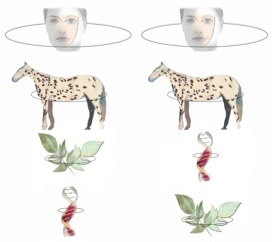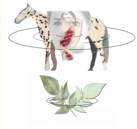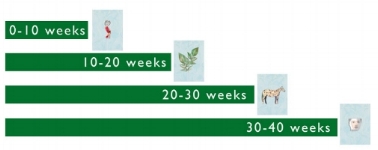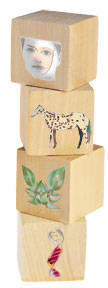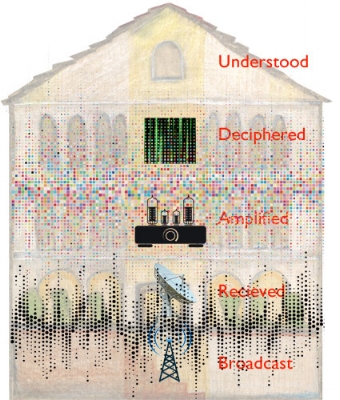Rhythms within the Rhythm
Cranial Academy Conference, Des Moines, Iowa. June 2002
CFD logo
Dr. William Sutherland’s legacy formulated a new map of osteopathy. His world view was shaped by Dr. Andrew Taylor Stills, the medical models of the day, two world wars, a turn-of-the-century education, and a wide noosphere fostered by his medical community, his culture, and his own religious and ethical character. Sutherland greatly broadened the understanding of the intricate workings of the cranial system. His experiences, both experiential and empirical, resulted in the “map” that we know today as ‘Osteopathy in the Cranial Field’.
Since its presentation to the Osteopathic profession in the nineteen forties, we have attempted to define and marry this map with conventional science. Our profession depends on this acknowledgment, so we can defend the model when it is questioned. The paucity of research [1] in this area does not refute our own experiences, for all of us can undeniably attest to the underlying principle of the primary rhythmic impulse (PRI) and the patterns of dysfunction that distort this innate movement.
The Field
Drs. Stills, Sutherland, and a legion of osteopaths since have all had the collective consciousness or field [2] with regard to the cranial system. The prevailing premise that structure governs function was defined by the minds of those in the early part of the last century. Andrew Stills was the first to articulate this when he recognized that the body was an extraordinary structure, perfected over the millennia, and it was capable of self-medication. He further observed that when unable to self-correct, the body was often structurally disorganized. And that realignment would facilitate change back to a healthy state.
Sutherland’s contribution to the idea of the primary or cranial rhythmic impulse (CRI) and the sophisticated mechanism behind it, altered our perception of the field of osteopathy. Modern research, in its attempt to understand the fluid rhythm, appears unable to produce a unified theory, for no current research has hit the proverbial (if not elusive) pot of gold [3] [4]. The premise of this paper is to present a new paradigm for the mechanism, based on a formal ontological [5] argument.
The Rhythm
One of the most consistent paradoxes with regard to the cranial system has been the general disagreement over the nature of the rhythm [6]. In many instances, people palpating the same mechanism often described a different count or rhythm [7] [8]. Perhaps it is nothing more than the fact that old hands are better at palpation than new. This would hardly be surprising, as we develop skills that are more finely tuned over time, and thus are able to better sense how the mechanism reads and not to place our own needs, history, or map onto it. However, the question still remains: why are these discrepancies and what do they mean?
The nature of the rhythm
In osteopathic literature, the discrepancy of the rhythm has implicated tissue restriction, pathophysiology, frank pathology, or elements of an altered psyche and/or psychotropic drugs. However, we appear to disregard the subtext, instead interpreting it as an accident (in the ontological sense) that happens at the moment of palpation. The phenomena are viewed merely as ‘temporary’ because treatment/facilitation changes what was observed. This accident [9] (which involves time and space) has a specific dependence on the substance–in this case, the body–for this endures [10] whereas these phenomena simply occur. However, it is the occurrence of things that actually affects the substance of the body and the rhythm tells us what is actually happening.
In classical terms, we can view the six-second cranial cycle and the variables that disrupt it as accidents that have happened. The walking wounded whom we see, carry the imprint of these variables through the door of our office. But what came first? The backache, the fall, traffic accident, habitual pose, and the repetitive trauma, are all accidents that have occurred. However, we must also ask whether there were co-existent accidents (a state of non-adaptability) already occurring within the niche occupied by that person at that moment
The niche [11]
Essentially the human self is an organism–a functioning system of interdependent parts that makes us living creatures. Its parts [12] are situated in their own niche within the frame of the organism. Each part speaks–its language can be ‘heard’ through the rhythm. Classical osteopathy has been bipolar in its view of the human. The profession has regarded the body holistically, that is looking at the sum of the whole at any given moment, but has also created the idea that we exist as primary and secondary systems [13]. To better understand the language of the rhythm we may look at the segmented nature of a human by altering ‘the’ map of cranial osteopathy. This will help us to see both the vertical and horizontal relationship between the various aspects of the human self. The rhythm itself exhibits this arrangement if we expand the linear sine wave and give it not only time and place [14] but also power and force.
The typical sine wave can be drawn as such:
Where X is a duration of approximately 6 seconds, and Y represents power or force.
This waveform is an accident in that it exists only for the moment and may change depending on the observer and the observed. We know that it is very easy to induce change, simply by watching or being attentive to the rhythm of the mechanism, inducing a still point.
[The operator’s own force creates a fulcrum upon the rhythm, which induces a gradual change and ultimate still point or cessation of movement. Change then occurs, and the mechanism swings back into life, often with a different rhythm or amplitude.]
We know that the rhythm may not be so obvious in other parts of the body, and may reveal a differing tempo. Why is it that some body parts with differing functions exhibit altered rhythms? What is actually going on? Is it simply that the structure is distorted, holding a lesion pattern in the classical sense, or is there some other force at work that affects the structure/function relationship?
Ontology versus phylogeny
A human is a living entity that has substance (a vertical life) and is associated with, and has a relationship to the horizontal – a width of life, where accidents occur. These are the variables of our existence, both transitory and long-lasting that occupy our space, fill our lives, and help to either bring us alive or metaphorically keep us asleep. The osteopathic maxim considers a formal description of the human as a structure that when organized supports its function. This infers that the early ontogeny of our embryological maturation is the determinant of our osteopathic philosophy, rather than putting more weight on the sophisticated and more complex systems that actually form the potential for the human self. We have firmly grasped onto the deific notion of a primary system–the neuromusculoskeletal system–and secondary systems that serve the first order. The problem with this approach is that in the vertical relationship of the self, it places part of our substance in the wrong order.
Left: normal hierarchy. Right: Disorganised hierarchy, with vegetal (physiological) self as base or foundation.
[Right picture–neuromusculoskeletal system: human-animal-material system empowered and supported by the vegetal; a house of straw!]
The osteopathic profession placed the vegetative–our provider mechanisms/physiology–as our foundation or base which then supported the neuromuscular system which, by default, is undifferentiated by the naming of such a ‘system’.
Undifferentiated neuromusculoskeletal system supported by our physiology
Ontogenesis
In embryology, we progress through periods of development that are allied to time and illustrate the phylogeny of the genus [16]. This can be illustrated not in the classical trimester model but in four 10-week stages:
4, 10-week periods in gestational development
- material – our ground substance is laid down, and we develop towards a
- vegetal stage, as our ancillary support systems (physiology and rudimentary brain functions) are formed. We then go through an
- the animal period from the 20th to 30th weeks whereby we mature sufficiently – and where survival is around 30 weeks–discounting modern neonatal care, is possible, and a
- the human stage when the neocortex is fully fleshed out in the last 10 weeks of gestation.
These four stages point to the evolution of our species from the material kingdom to humans. This phylogeny is older than the ontogeny and yet the two are intertwined. In osteopathic literature, we have made a hierarchical assumption that places the animal and material elements in a higher relationship than the vegetal, with scant regard to the human self, which is rather lumped into the animal component. The vegetal (as our ANS) is placed as the foundational resource that supports the systems above. The vegetal part is our physiology which is seen as the provider for the primary system. This creates an organism whose parts occupy the wrong niche or hierarchical order.
The four natures and the four rhythms
The four natures, each of which illustrates different signatures (rhythms)
Hierarchically, the four natures–emphasized embryologically as stages of development–can be mapped out in the human body. Each part can reveal itself through differing sub-rhythms which signal their influence. For over thirty-seven years, I have observed that the key is to understand these sub-rhythms, for they are the pattern that upsets the primary display, and distort the harmonic interplay of all the other physiological systems. If we teach our students to palpate a single rhythm, then they will find only one rhythm. If, on the other hand, we teach that the Sutherland rhythm is the summation [17] of many rhythms, we can then notice that its alteration is an accident or influence and has a causal relationship to the whole. That is, each different rhythm tells us which part of the human speaks or calls our attention. Some part of our organism whether in its niche, placed or put in an inappropriate relationship (to the ordered organism), becomes the consequence of an accident that affects the substance. This part of us tries to influence us because it needs attention. Its intention is to direct us to the source of power that influences us.
Material Human–Material substance
–the accident is the signal of Ancestral resonance
Material resonance
The material human is the body that we observe in a standing examination. It is the frame by which the human is slung over, enwrapping a fabric over the dense weave of our skeleton, and enfolding a sea of parts within, to harness our life. This is the cement, albeit living, that binds us together and portrays the nuance of the past in our posture and stance, in our bony shape and our buttresses. We mirror parts of the past and reveal our lineage through our predilections, our inherited pathophysiology, and our encoded pathologies. These signal us via the bones, and tissue matrix, as an almost imperceptible rhythm–a tiny vibration that has a characteristic incessant oscillation. It has low amplitude, takes little space, and does not, on the whole, become so salient as to dominate the patient’s time and attention. Sometimes there is no rhythm–a proverbial flatline–and this material no-wave is indicative of tissues asleep or dead, unalive.
This barely perceptible rhythm is how the body signals us–like a telephone without an amplifier–so we feel the vibration of the spoken word but cannot hear the words in the receiver. This is the calling card of our ancestral patterns. Their noise is constant, yet they lie in the background and therefore are almost never noticed until we manifest this fundamental archaic state–our constitution–through our bony pains. When we have compressed fractures, osteochondrosis, when vertebra lose their shape and bones ache, or when we develop spurs and osteoporosis and bony fractures we are indicating that a primary material force–gravity, pulls us down towards the soil, towards the old, the ancient, our heritage. Our ancestors herald us, they signal us with the strength and power of the selfish gene, the power of the material gene that we contain. This is our bedrock and foundation, and which we have inherited from our forebears. This resonance is an alarm from our ancestors to force us to look at our foundation and roots.
Vegetal human–Vegetal substance
Accident is sensorial / time/time past / our roots / an Ancestral call
Vegetal sine way
If we do not notice the material oscillation or signal, we simply over time, adapt to it. The body accommodates, dependent on the myriad of other accidents that have occurred, which stymies the flexibility of the system. When our inherent capacity to adapt starts to wane, the body begins to amplify the signal so that we become aware of it. It does this by changing the carrier. Instead of the bones, we carry it in the substance of our soft tissue and organs. This is the secondary system of our osteopathic model. Our internal milieu holds the field occupied by the amplified signal, and this is registered as noise in the system. As we amplify the signal it becomes a field–it occupies an area within (our tissues) and creates a force that exerts an influence at every point. The vegetal ANS and associated plexi act as capacitors holding the field or charge. Our neurology records the afferent signals and either stops them locally or sends the message up to the mid-brain and limbic system (amygdala) to compare it to previous experiences.
If the noise in the system is familiar but new, then the body will either send the data up to the mammalian brain and cortex for further identification, or it will simply react based on past experience. If the noise is habitual or known it may simply mask the data. However, the system alerts the practitioner that the person is ‘held’’ in time, unable to move out of that state. People held in the vegetal system are unable to be flexible enough to either be attentive or cognitively aware of their emotional or sensorial states. This asleep state is artificially kept down by the human (who manages) to avoid confrontation with those elements. The body indicates this through the nature of the rhythm itself, altering it into a low, flat sine wave. Its characteristic is a long duration with little amplitude. When palpated, we feel little power or dynamic present, and thus the patient is unable to lift themselves from their state. Hence, these patients tend to stay in their illness or dysfunction as they lack the animal vitality to move out of their state. When we palpate, we may find that their tissues drag us into them; we become sleepy, tired, and yawn as their system takes our energy to try to change or replenish a depleted state.
This is a vegetal, emotional-based life, water-logged or fluid stasis in its essence. Their lethargy, poor thyroid function, and general debility mean that the vegetal human is in power and that the person’s emotional life takes precedence. Underneath this, there may be some ancestral pattern or resonance that heralded this condition, or that the person’s constitution has allowed a field to enter from the horizontal world of phenomena.
Animal human–Animal substance
The accident is the force of protection, defence, and habit / the dura protects.
Many of us shrug off the aches and pains, and slight discomfort, or adopt a laissez-faire attitude to ourselves. We fail to notice or are ‘out of step’ with the underlying unease. When situations are more immediate or life threatening the body can effectively illustrate warning. It does this through our joints, fascia, dura, and muscles. Our locomotive mechanism–our mammalian cortex, limbic system, rhinencephalon, cerebellum, joints, muscles, and limbs–directs our capacity to act in life. This is the neuromuscular system acting across our neuromusculoskeletal system. When the structures that enable us to act in life are affected then the rhythm again changes and illustrates the force of the information carried. When the human becomes unable to move, unable to act, moribund, when they become out of step with what really is bothering them, then the rhythm changes to amplify this situation. The sine wave has a higher potential in its amplitude and shorter duration. The speed of the rhythm–quicker than normal–tells us the person is held in the process of doing a life rather than living a life. This is the ‘A-type personality, the business person, executive, highly competitive athlete, alpha male or female, the salesman– humans who appear to operate from a perspective of survival, protection, and aggressive and persistent action.
Protection
The nature of the animal self is to survive. It does this by defining and protecting its territory, feeding, and mating. It provides humans with our work ethic, power and strength, flight and fight, sexuality and courage. This inbuilt animal mechanism is exemplified by the axiomatically named dura mater (protective/tough mother), which is actually programmed to lead us off on a wild goose chase. When we hold onto the dura we meet the wounded animal. This is amplified when we follow the dura to unwind the fascial mechanism. Its modus operandi is to provide protection. It does this as the animal would do, taking us off course so we are unable to find the truth around which they’re being piloted. Finding the true fulcrum is often a moot point and possibly gives credence to many osteopaths who assert that unwinding, although spectacular, may not actually result in resolution.
Human self– Human substance–accidents are thoughts / Cerebral asymmetrical movement
The human sine wav; intermittent, variable, unstructured; the sum of the lower three
Humans may be well-adapted and have systems that illustrate fundamental wholeness and unity in a vertical manner. That is, their systems illustrate a healthy and functional state. However, their psyche can be the root of their problems or ills. Many people have robust constitutions–these are inherited. What may ail them is the human mind. The clay or material nature of the brain itself is inherited through our DNA, just as we inherit our skin, hair, and eye colour. Just as the tissue matrix of our body illustrates our familial predispositions, so too, do our minds. In our technological, literate society, where knowledge has become paramount, the psyche takes a bitter toil. It struggles with knowledge, for it has little boundaries, but also is hindered by inherited mental patterns and traits. The human mind, entangled by or sometimes unfettered by knowledge, speaks through a completely different rhythm. This is characterized by high and low peaks, intermittent fluctuation, and movements or two of absence, without a still point. It can disappear, appearing disjointed and un-integrated. This uneasy rhythm is difficult to notice, tantalizingly difficult to sense, and often disappears when our attention is focused on it. It can reflect lofty untethered thoughts, castles in the sky, an ungrounded imagination. Conversely, if the human mind has shaped and woven beliefs and ideas that have entangled the patient, the human rhythm may then feel entangled, enwrapped, held down, or too wide, possessing thoughts that are too expansive and without boundaries
Pathoneumonic
Although the cranial rhythm is not heard, it is felt and its nature is pathognomonic [18] of the carrier from which we are operating. Noticing the nature of the rhythm that underlies the mechanism allows us to have a far broader understanding of the patient’s state. That is, instead of simply addressing the symptom that is being presented, we may notice that there is an ancestral or inherited predisposition deep within the system that signals its disquiet and may well be the precursor to the accident or repetitive trauma that has occurred.
Broadcast (material resonance)
This is when we are aware of a tiny resonance deep within the bony matrix. Clinical experience has shown us that some bones hold patterns that are inherited and manifest with a similar broadcast in all peoples, whereas when other non-specific bones hold a resonance they broadcast a particular and specific set of instructions for that person.
Receiver (awareness of the resonance)
Occasionally when we hold onto our patients, we may find ourselves being drawn into a somnolent state, as we hold onto a system devoid of its own power. We may find ourselves ‘going out’ or suddenly lose consciousness. This tells us that we have been drawn into or encountered a field whose power pushes us ‘out’ suddenly, as we meet its force. We may then enquire as to the person’s emotions or feelings at that moment relevant to the present context.
Amplified (amp up the signal)
Likewise, when our attention is narrowed towards the fascia or dural mechanism we ought to become aware of the nature of the tissues. Addressing the protective mechanism as a delaying, obfuscating, and defensive mechanism allows the subtext to surface–familial pattern and /or emotional history. The fulcrum around which the pattern has occurred may well then present itself in a hidden manner. What is being protected, and what habit has made the path? What is it that they defend, or hide?
Deciphered/Decoded
Palpating a rhythm that fades away, goes off, or disappears entirely may well signal us as physicians to enquire as to the beliefs and conceptual maps that the person may hold, that send their primary human mechanism into a cerebral torque, asymmetry, or dysfunction within the ventricular spaces. This may then help to decode or understand the shape of the dissonance from that initial resonance deep within the base of themselves.
Addressing the repetitive pattern at its root, even in the absence of knowing precisely what has been carried through the DNA or code, may nevertheless allow the innate potential of the body to recognize the predisposition that had created the accident of the moment.
Conclusion
Sutherland and others have performed an extraordinary service to remind us that evolution and the freehand that the Divine extends to its Creation, that we are indeed, an extraordinary machine. However we are of essence; and not merely a system, but an organism. Our ground substance is life, imbued by the pneuma of the Divine. This primary life force animates all the elements within us, creating a different waveform nuance via the four elements that we are created from. We contain a multitude of differing and often separate parts all playing a role within us. When we begin to note that our own consciousness dictates our own cranial rhythm, we may then reconcile the model that the cranial rhythm actually is a signal of an unexpected life within, and this creates the rhythm.
Notes
1] Dr. James Jones DO has written a seminal piece on contemporary research regarding osteopathic medicine. Dr Jones can be contacted at the College of Osteopathic Medicine of the Pacific, the Western University of Health Science, Pasadena, California.
2] A field is that which occupies our space or fills our thoughts – this is what Jung would have termed a collective consciousness–and is based on a unified principle of the CRI.
3] KE Nelson, N Sergueef, CM Lipinski, AR Chapman, T Glonek. The cranial rhythmic impulse related to the Traube-Hering-Mayer oscillation: Comparing laser-Doppler flowmetry and palpation. The frequency or rate after cranial treatment fell into the range of 6 – 10 cycles per minute. Prior to this frequency had a duration (frequency) that was quite rapid in the subjects examined. J. Amer Osteopath Assoc 2001; 101(3), pp163-173
4] In 1865, Traube reported an oscillation in blood pressure and blood flow velocity with a frequency of 6 to 10 cycles per minute, and this was further acknowledged by Herring the following year– hence the Traube-Herring oscillation.
5] Ontology is the most general branch of metaphysics, concerning the nature of being.
6] The general consensus is that there is a rhythm that has a cyclical nature or rhythm of about six seconds, or about 10 cycles per minute. However empirical observation indicates that this rhythm is variable, dependent on the state (lesion, pathophysiology, or pathology) of the person, and may be anything between 6 and 14 cycles per minute.
7] Dr VM Frymann DO FAAO FCA in 1971 suggested that the cranial rhythm maybe some form of ‘beat’ frequency of the pulses–cardiac and respiratory– in both client and practitioner.
8] McPortland and Mein (1997) considered that the rhythm was a summation of the many inherent rhythms within the body. The rhythm was the expression of a harmonic frequency of many biological oscillators and included the respiratory, cardiac pulse, Traube-Hering-Mayer modulation, diaphragmatic excursion, contractile blood vessels, CSF production by the choroids, and perhaps others. When we palpate, we may feel the blend of all these. Some practitioners will have a bias towards a particular frequency, that is their own kinesthetic senses and state will perceive particular elements within that frequency set. This may well explain some of the differences in palpatory perception.
9] The word accident is used in the ontological argument to imply an event or moment that occurs by chance, without any planning, apparent cause, or deliberate attempt.
10] The word endures implies the capacity to last or survive over a period of time when faced with difficulties.
11] The role of an organism within its natural environment, that determines its relations with other organisms to ensure its survival.
12] The parts consist of our structural, physiological, locomotive, cognitive, and essential identity.
13] This is a mirror of a deific model that assumes a central Divine axis, the primary force – and secondary elements created by such.
14] Place: is defined as the position of somebody or something, in rank, sequence, or series.
15] Force: somebody or something that has great power or influence, especially in a particular field, where the force exerts this influence at every point.
16] Time alters us, as accidents happen. These affect the substance. Accidents in utero act as the switching device of coded material in our genome, or the cessation of a switch in the structural, organ of chemical/physiological mechanisms.
17] As in Irvin M Korr’s classic model of neurological summation.
18] Although the word strictly infers that sound points to a pathology behind it – as in Chinese medicine, which relates to certain sounds as well as emotions as indicators of imbalance – the use here is that the rhythm speaks to us. In effect, we ‘hear’ it.


